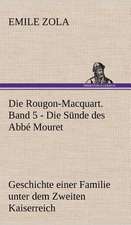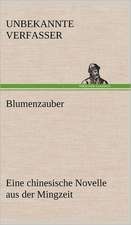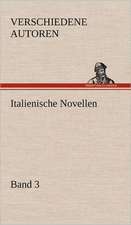Oxygen: A Novel
Autor Carol Cassellaen Limba Engleză Paperback – 15 oct 2009
A quieter crisis is simultaneously unfolding within Marie's family. Her aging father is losing his sight and approaching an awkward dependency on Marie and her sister, Lori. But Lori has taken a more traditional path than Marie, and is busy raising a family. Although she has been estranged from him for decades, the ultimate responsibility for their father's care is falling on Marie. As her carefully structured life begins to shatter, Marie confronts questions of love and betrayal, family bonds, and the price of her own choices. Set against the natural splendour of Seattle, and inside the closed vaults of hospital operating rooms, OXYGENclimaxes in a final twist that is as heartrending as it is redeeming.
Preț: 104.54 lei
Nou
Puncte Express: 157
Preț estimativ în valută:
20.00€ • 20.84$ • 16.56£
20.00€ • 20.84$ • 16.56£
Carte disponibilă
Livrare economică 13-27 martie
Preluare comenzi: 021 569.72.76
Specificații
ISBN-13: 9781416556114
ISBN-10: 1416556117
Pagini: 320
Dimensiuni: 140 x 214 x 25 mm
Greutate: 0.32 kg
Editura: S&S/ Marysue Rucci Books
Colecția S&S/ Marysue Rucci Books
Locul publicării:United States
ISBN-10: 1416556117
Pagini: 320
Dimensiuni: 140 x 214 x 25 mm
Greutate: 0.32 kg
Editura: S&S/ Marysue Rucci Books
Colecția S&S/ Marysue Rucci Books
Locul publicării:United States
Notă biografică
Carol Cassella, MD, is a practicing anesthesiologist, novelist, and speaker. She majored in English literature at Duke University and attended Baylor College of Medicine. She is the bestselling author of the novels Gemini, Oxygen, and Healer, published by Simon & Schuster. Carol lives on Bainbridge Island, Washington, with her husband and two sets of twins. Visit the author at CarolCassella.com.
Extras
Oxygen
People feel so strong, so durable. I anesthetize airline pilots, corporate executives, high school principals, mothers of well-brought-up children, judges and janitors, psychiatrists and salespeople, mountain climbers and musicians. People who have strutted and struggled and breathed on this planet for twenty, thirty, seventy years defying the inexorable, entropic decay of all living things. All of them clinging to existence by one molecule: oxygen.
The entire complex human machine pivots on the pinnacle of oxygen. The bucket brigade of energy metabolism that keeps us all alive ends with oxygen as the final electron acceptor. Take it away, and the cascade clogs up in minutes, backing up the whole precisely tuned engine until it collapses, choked, cold and blue.
Two portals connect us to oxygen—the mouth and the nose—appreciated more for all their other uses: tasting, smelling, smiling, whistling, blowing smoke and blowing kisses, supporting sunglasses and lipstick designers, perfumeries and plastic surgeons. Seal them for the duration of the morning weather report and everything you had planned for the rest of your life evaporates in a puff of imagination.
There is a moment during the induction of general anesthesia when I am intimately bonded to my patient. A moment of transferred power. I squeeze the drug out of the syringe, into the IV line, and watch the face slacken, watch the last organized thoughts slip from consciousness, see breathing shallow, slow, stop.
If I deserted my patient—deep in that swale of sleep, as suffocation colored blood blue—the lips would turn violet, pink skin would dull to gray, and the steady beep, beep, beep of the heart monitor would fade, then falter. Like an archaeological ruin, the brain would die in levels; personality, judgment, memory, movement collapsing like falling bricks to crush the brainstem’s steady pulse of breath and blood.
There are points in an otherwise routine day when I am struck by how precariously this unconscious patient dangles, like a hapless fly on a spider’s thread. It is like drowning, but blessed unconsciousness precedes desperate air hunger. At the last instant I swoop in and deliver a rescuing breath, adjust my machine to take over what the brainstem can no longer command—make the lungs move oxygen in and out to keep the heart beating, transferring each oxygen molecule to the cells. It becomes so easy, after years of the rescue. It becomes so routine, to watch the ebb of consciousness followed by the ebb of breath, and then to spring up as the obligate hero. It no longer feels like power. It feels like a job.
I am an anesthesiologist—a practitioner of the art and science of anesthesia. The word means, literally, “no sensation.” In our modern lexicon it denotes a temporary loss of sensation, an absence of pain during an otherwise painful procedure. That is how I see my job: to make painful events painless; to coax and manipulate the human mind to give up its fierce clutch on control, its evolutionary reflex to flee from dismemberment and violation.
Granted, most patients come to surgery out of choice: the shoulder that stiffens on the squash court; the gallbladder that pangs upon digesting a rosemaried leg of lamb; the nuisances of body fat or age lines. Then, of course, there are the unfortunate twists of nature that destine some of us to die before a graceful blur into old age: the cancers creeping into baseball-sized tumors while we pay our bills, prune our roses, plan our children’s birthday parties. Or the silent shearing of aortic aneurysms and coronary vessels and carotid arteries that snap our smoothly humming lives in half while we argue with our teenagers or make love to our husbands and wives. These events bring us to the doors of doctors and emergency rooms, place us supine on the white-sheeted gurneys rolling down the long, green-tiled, fluorescent-lit hallways into the cold and windowless operating rooms of this nation.
• • •
Today is a day like any other workday for me. I shut off my alarm before five and stand shivering beside my bathroom heater while the shower runs to warm. Somewhere in the city my patients are also beginning to rouse, anxious about their operations, worried about the ache or illness that can only be cured with a knife, trying to imagine the inevitable scar, trying to anticipate the pain. Maybe even trying to envision me, a stranger, the only doctor directly involved in their care whom they’ve never met. People may select their family practitioners based on comfort and trust, and their surgeons through reputation or referral, but anesthesiologists are usually assigned to an operating room rather than a particular patient. Hospitals couldn’t absorb car accidents and emergency C-sections and gunshot wounds into an already crowded surgery schedule without a flexible, interchangeable anesthesia team.
That anonymity almost kept me from choosing this specialty when I was in medical school. I wanted to be involved with my patients’ lives, not just be a transient manager of their pain. I balked at the hubris of asking anyone to yield so much control to me after only a few introductory words. But within the first week of my anesthesia rotation I discovered that I loved this work—its precision and focus, its balance of technical skill and clinical judgment; finessing the interplay of heart and lungs while the brain sleeps; titrating narcotics and nerve blocks to that sweet spot in which a cancer patient’s pain is relieved and they can still enjoy the time they have left with the people they love.
And inside the scant space of my preoperative interview I’ve found an entire cosmos of healing: the quick read of trepidation or naive acquiescence; the flash of entrapment or submission; perceiving the exact phrase or touch that can transform me from stranger to caretaker, from assigned clinician to guardian. I can’t prove that rolling into the operating room believing you will be kept safe improves the outcome of surgery, but it’s where I find the artistry in my work.
I slip on worn blue jeans and a loose sweater, thankful that I only have to dress for the commute. The aroma of coffee lures me into the kitchen, still dark as midnight. Tasks start to crowd out dreams—my presentation on labor epidurals for the nurses is due next week, the pharmacy committee wants a rundown on muscle relaxants, I have a dozen phone calls to make, and I should have changed the oil in my car about 12,000 miles ago.
The phone rings just as I screw the top on my travel mug, one foot already out the door. I grab it on the last ring in a lunge across the kitchen counter that spills coffee down my arm and knocks over a neglected potted violet, more brown than green; bone-dry dirt skitters across the floor.
“Aunt Marie? It’s Elsa.” Her voice is muffled and I hear a squall of tears tangled in her throat.
I look at my watch. “Hi, sweetie. What’s up? You sound kind of upset.”
“Not much. I just wanted to talk.”
“It’s five thirty in the morning, honey.”
“Seven thirty. It’s seven thirty here.”
“Right.” I lock the phone under my chin and sweep dirt and desiccated petals into a ridgeline under the counter with the toe of my shoe. If I’m not out the door in two and a half minutes I’ll be late. “So are you just getting up or just going to bed?”
“Ha-ha. School starts in forty-five minutes.” Her breath blows loud across the mouthpiece and I know exactly where she is—curled on top of her tennis shoes and sling-back sandals, draped in folds of Gap T-shirts and Abercrombie jeans, the telephone cord snaking under her closet door. “Mom and I had a fight last night. Did she call you?”
I drop my keys into my purse and lean on my elbows across the kitchen counter. “No. I was working late, anyway. What about?” I shove the coffeemaker at an angle so the red numbers on the clock don’t glare at me.
“She just doesn’t get it!” Her anger erupts into sobs. She is fifteen, the eldest child of my sister, Lori, my only sibling. When Elsa turned fourteen I was suddenly promoted to autodial status; I am the nonmother with all the answers to the questions she can’t bring herself to ask her mother. As honored as I am, I have to suspect she turns to me because she knows I’m holding both their hands.
“Get what, sweetie?”
“Anything! She blew up because my Civics essay is overdue. But it’s only late because I had to practice for Debate.”
“When did you join the debate team?”
“Not like school debate. It’s a new club. We want to legalize marijuana.”
I stand up straight and count to five before I answer her. “Elsa?”
“Yeah?”
“Would you tell me if you’re smoking pot?”
“Oh God, Aunt Marie. I hate getting high! But this is, like, basic civil rights!”
This time I count to ten and decide to ignore her slip. “Well, maybe you’ve got a leg up on your Civics essay here.”
Elsa calls out to my sister that she’ll be down when she’s dressed, stop bugging her. “What are you wearing?” she asks in a bright new voice, her distress forgotten.
“What am I wearing?” I look down. A faded cable-knit sweater in army green, blue jeans and water-stained clogs. “A drop-waist hot pink rayon skirt and creamy cashmere sweater. And I just got my nails done—one of those French manicure things. With polka dots. Also pink.”
Elsa bursts out laughing. “Oh right, Aunt Marie. You are so lying.”
“Caught me again! Remind me and I’ll send you some scrubs. Tie-dye them for me, huh? My boss would love that. So, what are you wearing?” Her laugh could almost make me forget about time. Eight minutes later Elsa is out of the closet and on her way to school. If the traffic lights are with me, I’ll be OK.
• • •
First Lutheran Hospital was built in the thirties, a castle of art deco facades, a fortress against disease. I’ve worked here for seven years—long enough to have a good parking spot in the basement garage, avoiding the cold drizzle of Seattle in these early days of spring. I push the gearshift into neutral and turn the heat vent toward my face to enjoy a last second of solitude.
At this early hour I’m one of the few physicians in the hospital. But the lingering night staff and arriving day shift are already filling the hallways. They chatter in Tagalog and Korean and Urdu and Spanish and English—beneficiaries of an international recruiting effort that annually scavenges the brightest graduates of foreign classrooms to staff American hospitals. It takes a small city of personnel to move each patient from the parking garage where they arrive intact to the exiting wheelchair ramp that spins them back into their lives, stocked with clean bandages, pain pills and a ten-day-follow-up appointment. All of us dress for work in the same blue cotton pants and shirts, wearing the same blue hair caps and shoe coverings designed to keep our personal bacteria out of our patients’ open bellies, chests and limbs.
While much of the city still sleeps, we heave in to set up medicine’s greatest show, the Barnum & Bailey of daring adventures inside the human body. Ropes of electrical cords are uncoiled between cautery devices, television towers, bypass machines, lasers, microscopes and mobile X-ray units. Scaffolds of surgical steel are autoclaved to cleanliness, instruments displayed like exotic cutlery along lengths of wheeled tables. A swimming pool of sterile saline is warmed to human temperature, ready to plug into blood vessels and pour into body cavities.
Bethany, our operating room manager, slides the jumble of planned and emergent surgeries, instrument trays, cameras, fiber-optic scopes, technicians, pumps and personalities together into a functioning organism. She’s mastered a balance of fawning and authoritarianism that keeps our surgeons grudgingly cooperative. She sits at her high desk behind a sliding glass window, clacking away at her computer keyboard with long purple fingernails, a ruling priestess over the operating rooms.
I scratch my own bare nails across the glass to annoy her, and she looks at me over her rhinestoned bifocals, looped by a turquoise beaded chain around her neck. “Hi, Bethany. Where am I today?”
“Scratch that window one more time and I will tell Dr. Scoble you volunteered to take every holiday call.”
“I’m already on three this year. You’ll have to come up with something scarier.” I steal a cinnamon candy from a paper cup on the window ledge and pop it into my mouth. “Speaking of call, I have friends coming to visit week after next. Any idea how busy things are looking? It’s spring break, so some of the surgeons ought to be out of town.”
She fishtails her computer mouse across the desk, clicking through screens. “Looks like . . . three generals and two vasculars are out. Should be OK.” She slides a pad of paper toward me. “Write the dates down. I’ll try to put you in light rooms. If you bring me more pralines.” I gave the OR staff boxes of my favorite Texas pralines last Christmas and Bethany’s now addicted.
“A whole crateful. How does today look?”
“Bad. Hope you slept well. Fifty-eight cases scheduled—three hearts—and I’ve already got six add-ons. Be glad you’re not first call.”
“I’m fourth. Any emergencies yet?”
“One. Subdural hematoma going in twelve.”
Sometimes I think the hospital administrators would like us to staff every operating room twenty-four hours a day; it’s one of the few sectors of hospital care that predictably generates money. But we at least make an attempt to accommodate normal circadian sleep rhythms by rotating the length of our days throughout our anesthesia group. Once or twice a week I take the first call duty and stay in the hospital all night doing whatever emergency operations come in. One of my partners takes second call, staying until late in the evening and being available to come back to the hospital if two of us are needed. Then the call peels down sequentially from there, a higher number designating a shorter workday. But all days are eventually ruled by surgical imperative—tumors encroaching on vital organs, the brittle, broken bones of old age, gangrenous limbs that threaten sepsis, twisted fallopian tubes and obstructed bowels.
Bethany says, “You start in five with Stevenson, then I’ve got you covering eight in the afternoon, unless I have to slide one of the add-ons into five. Hillary’s in eight until you can relieve him—he was on call last night. McLaughlin got pulled away for a long case in radiology, so I don’t have anybody free to give breaks until after twelve thirty. Sorry. If Janovich keeps to his schedule Kuciano should be free to get you out for lunch. Maybe.” She lays out the day she has meticulously choreographed to move as many patients as possible through the system before overtime has to be paid.
I look at the immense whiteboard across from Bethany’s desk that displays the entire list of surgeries and operating rooms, scheduled cases in black felt-tip pen and emergencies in red. Beside the number 5 runs a list of three short cases—a mastectomy, a ventral hernia repair and a central line placement—followed by one longer pediatric surgery. The first three anesthetics should be relatively simple and straightforward, if the patients are healthy. I’ll have to talk to Don Stevenson, my surgeon, about the child. We don’t take care of children as often as adults at First Lutheran, so those cases always seem more stressful. If Don can finish his surgeries reasonably close to the predicted time, I’ll be able to move into room 8 by three o’clock and let Joe Hillary go home to sleep. But I’ve worked with Don for a long time and know his tendency to overbook his day.
I tell Beth, “Better get a backup for Joe. Stevenson will run late, which will push that last case past three, I bet. Who’s on General Surgery call today?”
“Marky.”
“Oh God. Marconi. We’ll all be here late.” Sean Marconi is famous for working all night. Even on fourth call I am at risk for a long day.
Bethany winks at me over her glasses. “God Marconi or God God?”
“Does Marconi know the difference?” She laughs and I add, “You never heard me say that, Bethany. We have enough gods here as it is.”
• 1 •
People feel so strong, so durable. I anesthetize airline pilots, corporate executives, high school principals, mothers of well-brought-up children, judges and janitors, psychiatrists and salespeople, mountain climbers and musicians. People who have strutted and struggled and breathed on this planet for twenty, thirty, seventy years defying the inexorable, entropic decay of all living things. All of them clinging to existence by one molecule: oxygen.
The entire complex human machine pivots on the pinnacle of oxygen. The bucket brigade of energy metabolism that keeps us all alive ends with oxygen as the final electron acceptor. Take it away, and the cascade clogs up in minutes, backing up the whole precisely tuned engine until it collapses, choked, cold and blue.
Two portals connect us to oxygen—the mouth and the nose—appreciated more for all their other uses: tasting, smelling, smiling, whistling, blowing smoke and blowing kisses, supporting sunglasses and lipstick designers, perfumeries and plastic surgeons. Seal them for the duration of the morning weather report and everything you had planned for the rest of your life evaporates in a puff of imagination.
There is a moment during the induction of general anesthesia when I am intimately bonded to my patient. A moment of transferred power. I squeeze the drug out of the syringe, into the IV line, and watch the face slacken, watch the last organized thoughts slip from consciousness, see breathing shallow, slow, stop.
If I deserted my patient—deep in that swale of sleep, as suffocation colored blood blue—the lips would turn violet, pink skin would dull to gray, and the steady beep, beep, beep of the heart monitor would fade, then falter. Like an archaeological ruin, the brain would die in levels; personality, judgment, memory, movement collapsing like falling bricks to crush the brainstem’s steady pulse of breath and blood.
There are points in an otherwise routine day when I am struck by how precariously this unconscious patient dangles, like a hapless fly on a spider’s thread. It is like drowning, but blessed unconsciousness precedes desperate air hunger. At the last instant I swoop in and deliver a rescuing breath, adjust my machine to take over what the brainstem can no longer command—make the lungs move oxygen in and out to keep the heart beating, transferring each oxygen molecule to the cells. It becomes so easy, after years of the rescue. It becomes so routine, to watch the ebb of consciousness followed by the ebb of breath, and then to spring up as the obligate hero. It no longer feels like power. It feels like a job.
I am an anesthesiologist—a practitioner of the art and science of anesthesia. The word means, literally, “no sensation.” In our modern lexicon it denotes a temporary loss of sensation, an absence of pain during an otherwise painful procedure. That is how I see my job: to make painful events painless; to coax and manipulate the human mind to give up its fierce clutch on control, its evolutionary reflex to flee from dismemberment and violation.
Granted, most patients come to surgery out of choice: the shoulder that stiffens on the squash court; the gallbladder that pangs upon digesting a rosemaried leg of lamb; the nuisances of body fat or age lines. Then, of course, there are the unfortunate twists of nature that destine some of us to die before a graceful blur into old age: the cancers creeping into baseball-sized tumors while we pay our bills, prune our roses, plan our children’s birthday parties. Or the silent shearing of aortic aneurysms and coronary vessels and carotid arteries that snap our smoothly humming lives in half while we argue with our teenagers or make love to our husbands and wives. These events bring us to the doors of doctors and emergency rooms, place us supine on the white-sheeted gurneys rolling down the long, green-tiled, fluorescent-lit hallways into the cold and windowless operating rooms of this nation.
• • •
Today is a day like any other workday for me. I shut off my alarm before five and stand shivering beside my bathroom heater while the shower runs to warm. Somewhere in the city my patients are also beginning to rouse, anxious about their operations, worried about the ache or illness that can only be cured with a knife, trying to imagine the inevitable scar, trying to anticipate the pain. Maybe even trying to envision me, a stranger, the only doctor directly involved in their care whom they’ve never met. People may select their family practitioners based on comfort and trust, and their surgeons through reputation or referral, but anesthesiologists are usually assigned to an operating room rather than a particular patient. Hospitals couldn’t absorb car accidents and emergency C-sections and gunshot wounds into an already crowded surgery schedule without a flexible, interchangeable anesthesia team.
That anonymity almost kept me from choosing this specialty when I was in medical school. I wanted to be involved with my patients’ lives, not just be a transient manager of their pain. I balked at the hubris of asking anyone to yield so much control to me after only a few introductory words. But within the first week of my anesthesia rotation I discovered that I loved this work—its precision and focus, its balance of technical skill and clinical judgment; finessing the interplay of heart and lungs while the brain sleeps; titrating narcotics and nerve blocks to that sweet spot in which a cancer patient’s pain is relieved and they can still enjoy the time they have left with the people they love.
And inside the scant space of my preoperative interview I’ve found an entire cosmos of healing: the quick read of trepidation or naive acquiescence; the flash of entrapment or submission; perceiving the exact phrase or touch that can transform me from stranger to caretaker, from assigned clinician to guardian. I can’t prove that rolling into the operating room believing you will be kept safe improves the outcome of surgery, but it’s where I find the artistry in my work.
I slip on worn blue jeans and a loose sweater, thankful that I only have to dress for the commute. The aroma of coffee lures me into the kitchen, still dark as midnight. Tasks start to crowd out dreams—my presentation on labor epidurals for the nurses is due next week, the pharmacy committee wants a rundown on muscle relaxants, I have a dozen phone calls to make, and I should have changed the oil in my car about 12,000 miles ago.
The phone rings just as I screw the top on my travel mug, one foot already out the door. I grab it on the last ring in a lunge across the kitchen counter that spills coffee down my arm and knocks over a neglected potted violet, more brown than green; bone-dry dirt skitters across the floor.
“Aunt Marie? It’s Elsa.” Her voice is muffled and I hear a squall of tears tangled in her throat.
I look at my watch. “Hi, sweetie. What’s up? You sound kind of upset.”
“Not much. I just wanted to talk.”
“It’s five thirty in the morning, honey.”
“Seven thirty. It’s seven thirty here.”
“Right.” I lock the phone under my chin and sweep dirt and desiccated petals into a ridgeline under the counter with the toe of my shoe. If I’m not out the door in two and a half minutes I’ll be late. “So are you just getting up or just going to bed?”
“Ha-ha. School starts in forty-five minutes.” Her breath blows loud across the mouthpiece and I know exactly where she is—curled on top of her tennis shoes and sling-back sandals, draped in folds of Gap T-shirts and Abercrombie jeans, the telephone cord snaking under her closet door. “Mom and I had a fight last night. Did she call you?”
I drop my keys into my purse and lean on my elbows across the kitchen counter. “No. I was working late, anyway. What about?” I shove the coffeemaker at an angle so the red numbers on the clock don’t glare at me.
“She just doesn’t get it!” Her anger erupts into sobs. She is fifteen, the eldest child of my sister, Lori, my only sibling. When Elsa turned fourteen I was suddenly promoted to autodial status; I am the nonmother with all the answers to the questions she can’t bring herself to ask her mother. As honored as I am, I have to suspect she turns to me because she knows I’m holding both their hands.
“Get what, sweetie?”
“Anything! She blew up because my Civics essay is overdue. But it’s only late because I had to practice for Debate.”
“When did you join the debate team?”
“Not like school debate. It’s a new club. We want to legalize marijuana.”
I stand up straight and count to five before I answer her. “Elsa?”
“Yeah?”
“Would you tell me if you’re smoking pot?”
“Oh God, Aunt Marie. I hate getting high! But this is, like, basic civil rights!”
This time I count to ten and decide to ignore her slip. “Well, maybe you’ve got a leg up on your Civics essay here.”
Elsa calls out to my sister that she’ll be down when she’s dressed, stop bugging her. “What are you wearing?” she asks in a bright new voice, her distress forgotten.
“What am I wearing?” I look down. A faded cable-knit sweater in army green, blue jeans and water-stained clogs. “A drop-waist hot pink rayon skirt and creamy cashmere sweater. And I just got my nails done—one of those French manicure things. With polka dots. Also pink.”
Elsa bursts out laughing. “Oh right, Aunt Marie. You are so lying.”
“Caught me again! Remind me and I’ll send you some scrubs. Tie-dye them for me, huh? My boss would love that. So, what are you wearing?” Her laugh could almost make me forget about time. Eight minutes later Elsa is out of the closet and on her way to school. If the traffic lights are with me, I’ll be OK.
• • •
First Lutheran Hospital was built in the thirties, a castle of art deco facades, a fortress against disease. I’ve worked here for seven years—long enough to have a good parking spot in the basement garage, avoiding the cold drizzle of Seattle in these early days of spring. I push the gearshift into neutral and turn the heat vent toward my face to enjoy a last second of solitude.
At this early hour I’m one of the few physicians in the hospital. But the lingering night staff and arriving day shift are already filling the hallways. They chatter in Tagalog and Korean and Urdu and Spanish and English—beneficiaries of an international recruiting effort that annually scavenges the brightest graduates of foreign classrooms to staff American hospitals. It takes a small city of personnel to move each patient from the parking garage where they arrive intact to the exiting wheelchair ramp that spins them back into their lives, stocked with clean bandages, pain pills and a ten-day-follow-up appointment. All of us dress for work in the same blue cotton pants and shirts, wearing the same blue hair caps and shoe coverings designed to keep our personal bacteria out of our patients’ open bellies, chests and limbs.
While much of the city still sleeps, we heave in to set up medicine’s greatest show, the Barnum & Bailey of daring adventures inside the human body. Ropes of electrical cords are uncoiled between cautery devices, television towers, bypass machines, lasers, microscopes and mobile X-ray units. Scaffolds of surgical steel are autoclaved to cleanliness, instruments displayed like exotic cutlery along lengths of wheeled tables. A swimming pool of sterile saline is warmed to human temperature, ready to plug into blood vessels and pour into body cavities.
Bethany, our operating room manager, slides the jumble of planned and emergent surgeries, instrument trays, cameras, fiber-optic scopes, technicians, pumps and personalities together into a functioning organism. She’s mastered a balance of fawning and authoritarianism that keeps our surgeons grudgingly cooperative. She sits at her high desk behind a sliding glass window, clacking away at her computer keyboard with long purple fingernails, a ruling priestess over the operating rooms.
I scratch my own bare nails across the glass to annoy her, and she looks at me over her rhinestoned bifocals, looped by a turquoise beaded chain around her neck. “Hi, Bethany. Where am I today?”
“Scratch that window one more time and I will tell Dr. Scoble you volunteered to take every holiday call.”
“I’m already on three this year. You’ll have to come up with something scarier.” I steal a cinnamon candy from a paper cup on the window ledge and pop it into my mouth. “Speaking of call, I have friends coming to visit week after next. Any idea how busy things are looking? It’s spring break, so some of the surgeons ought to be out of town.”
She fishtails her computer mouse across the desk, clicking through screens. “Looks like . . . three generals and two vasculars are out. Should be OK.” She slides a pad of paper toward me. “Write the dates down. I’ll try to put you in light rooms. If you bring me more pralines.” I gave the OR staff boxes of my favorite Texas pralines last Christmas and Bethany’s now addicted.
“A whole crateful. How does today look?”
“Bad. Hope you slept well. Fifty-eight cases scheduled—three hearts—and I’ve already got six add-ons. Be glad you’re not first call.”
“I’m fourth. Any emergencies yet?”
“One. Subdural hematoma going in twelve.”
Sometimes I think the hospital administrators would like us to staff every operating room twenty-four hours a day; it’s one of the few sectors of hospital care that predictably generates money. But we at least make an attempt to accommodate normal circadian sleep rhythms by rotating the length of our days throughout our anesthesia group. Once or twice a week I take the first call duty and stay in the hospital all night doing whatever emergency operations come in. One of my partners takes second call, staying until late in the evening and being available to come back to the hospital if two of us are needed. Then the call peels down sequentially from there, a higher number designating a shorter workday. But all days are eventually ruled by surgical imperative—tumors encroaching on vital organs, the brittle, broken bones of old age, gangrenous limbs that threaten sepsis, twisted fallopian tubes and obstructed bowels.
Bethany says, “You start in five with Stevenson, then I’ve got you covering eight in the afternoon, unless I have to slide one of the add-ons into five. Hillary’s in eight until you can relieve him—he was on call last night. McLaughlin got pulled away for a long case in radiology, so I don’t have anybody free to give breaks until after twelve thirty. Sorry. If Janovich keeps to his schedule Kuciano should be free to get you out for lunch. Maybe.” She lays out the day she has meticulously choreographed to move as many patients as possible through the system before overtime has to be paid.
I look at the immense whiteboard across from Bethany’s desk that displays the entire list of surgeries and operating rooms, scheduled cases in black felt-tip pen and emergencies in red. Beside the number 5 runs a list of three short cases—a mastectomy, a ventral hernia repair and a central line placement—followed by one longer pediatric surgery. The first three anesthetics should be relatively simple and straightforward, if the patients are healthy. I’ll have to talk to Don Stevenson, my surgeon, about the child. We don’t take care of children as often as adults at First Lutheran, so those cases always seem more stressful. If Don can finish his surgeries reasonably close to the predicted time, I’ll be able to move into room 8 by three o’clock and let Joe Hillary go home to sleep. But I’ve worked with Don for a long time and know his tendency to overbook his day.
I tell Beth, “Better get a backup for Joe. Stevenson will run late, which will push that last case past three, I bet. Who’s on General Surgery call today?”
“Marky.”
“Oh God. Marconi. We’ll all be here late.” Sean Marconi is famous for working all night. Even on fourth call I am at risk for a long day.
Bethany winks at me over her glasses. “God Marconi or God God?”
“Does Marconi know the difference?” She laughs and I add, “You never heard me say that, Bethany. We have enough gods here as it is.”
Recenzii
"In Oxygen, Carol Cassella's taut novel, Dr. Marie Heaton, an assured anesthesiologist at the top of her game, is forced to face the personal and professional fallout from an operating room disaster. Marie finds herself on the losing end of dollars-and-cents medicine in a malpractice suit, questioning herself, her skills, her colleagues, and her life choices. I couldn't wait to race to the end to see how her story played out, and I wasn't disappointed." -- Lalita Tademy, author of Cane River
"A subtle, compelling plot that twists and twists again. This quickly becomes a book you cannot put down." -- The Dallas Morning News
"A finely crafted mystery, as well as a sparkling literary work." -- THE DENVER POST
"Like her protagonist, Carol Cassella has the heart of a poet and the mind of a physician; the result is a striking meditation on the complexities of love, the fragile miracle that is the human body and the burdens and blessings of being a healer." -- Stephanie Kallos, author of Broken for You
"More than just an assured debut novel, this book is a tour de force, as emotionally involving as it is intelligent. Carol Cassella writes with the clarity and precision that are the hallmarks of her other profession....The fine, sharp details of her portrait of a gifted doctor facing a devastating crisis will stay with you long after the book is closed." -- Susan Wiggs, author of Fireside and Just Breathe
" A startling plot twist, combined with Cassella's first-hand understanding of our ailing healthcare system, makes this involving debut just what the doctor ordered." -- PEOPLE
"A subtle, compelling plot that twists and twists again. This quickly becomes a book you cannot put down." -- The Dallas Morning News
"A finely crafted mystery, as well as a sparkling literary work." -- THE DENVER POST
"Like her protagonist, Carol Cassella has the heart of a poet and the mind of a physician; the result is a striking meditation on the complexities of love, the fragile miracle that is the human body and the burdens and blessings of being a healer." -- Stephanie Kallos, author of Broken for You
"More than just an assured debut novel, this book is a tour de force, as emotionally involving as it is intelligent. Carol Cassella writes with the clarity and precision that are the hallmarks of her other profession....The fine, sharp details of her portrait of a gifted doctor facing a devastating crisis will stay with you long after the book is closed." -- Susan Wiggs, author of Fireside and Just Breathe
" A startling plot twist, combined with Cassella's first-hand understanding of our ailing healthcare system, makes this involving debut just what the doctor ordered." -- PEOPLE
Descriere
Now in paperback, a riveting new book that expertly combines compelling women's fiction with medical drama by a real-life anaesthesiologist.





















